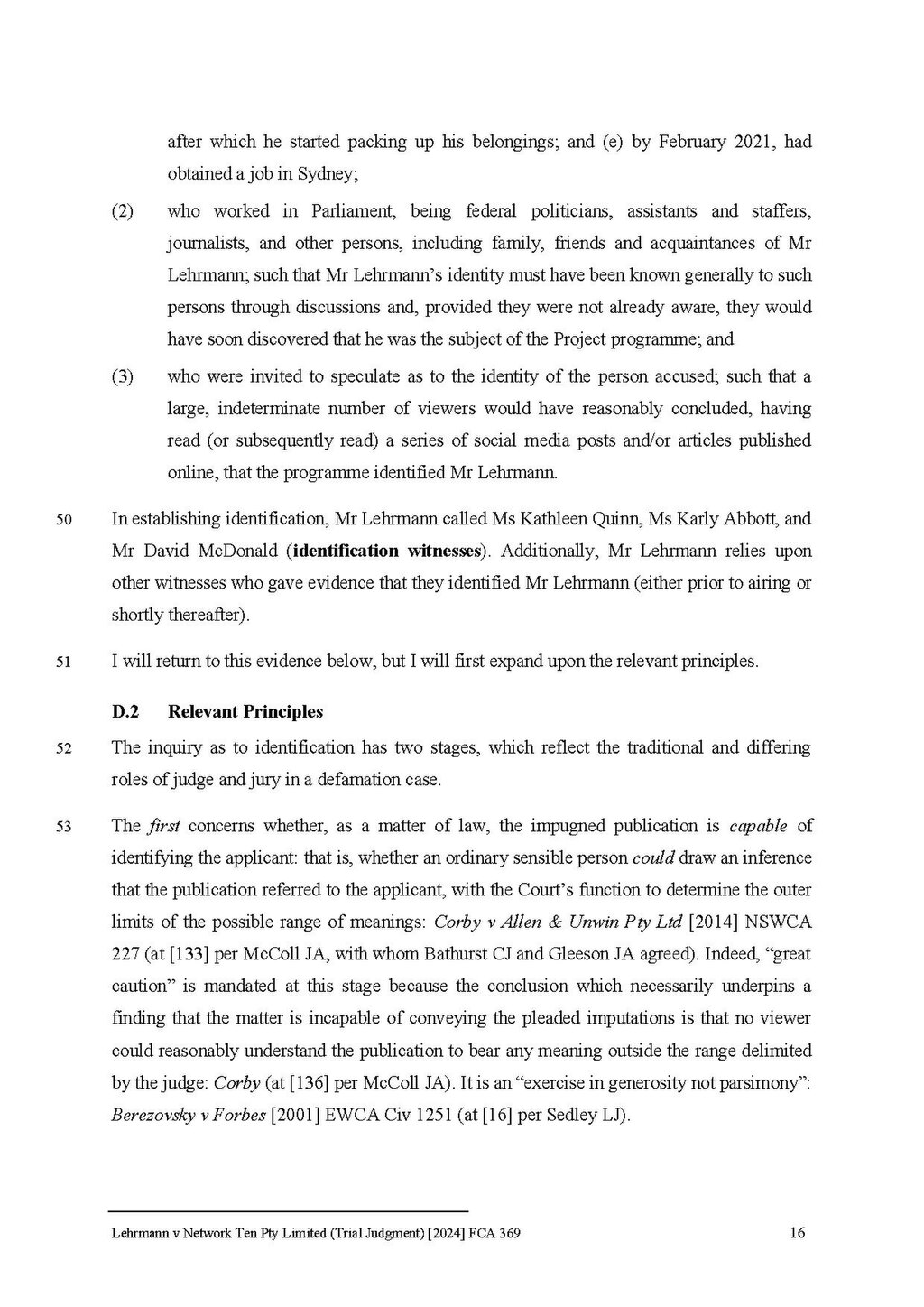after which he started packing up his belongings; and (e) by February 2021, had obtained a job in Sydney;
- (2) who worked in Parliament, being federal politicians, assistants and staffers, journalists, and other persons, including family, friends and acquaintances of Mr Lehrmann; such that Mr Lehrmann's identity must have been known generally to such persons through discussions and, provided they were not already aware, they would have soon discovered that he was the subject of the Project programme; and
- (3) who were invited to speculate as to the identity of the person accused; such that a large, indeterminate number of viewers would have reasonably concluded, having read (or subsequently read) a series of social media posts and/or articles published online, that the programme identified Mr Lehrmann.
50 In establishing identification, Mr Lehrmann called Ms Kathleen Quinn, Ms Karly Abbott, and Mr David McDonald (identification witnesses). Additionally, Mr Lehrmann relies upon other witnesses who gave evidence that they identified Mr Lehrmann (either prior to airing or shortly thereafter).
51 I will return to this evidence below, but I will first expand upon the relevant principles.
D.2Relevant Principles
52 The inquiry as to identification has two stages, which reflect the traditional and differing roles of judge and jury in a defamation case.
53 The first concerns whether, as a matter of law, the impugned publication is capable of identifying the applicant: that is, whether an ordinary sensible person could draw an inference that the publication referred to the applicant, with the Court's function to determine the outer limits of the possible range of meanings: Corby v Allen & Unwin Pty Ltd [2014] NSWCA 227 (at [133] per McColl JA, with whom Bathurst CJ and Gleeson JA agreed). Indeed, "great caution" is mandated at this stage because the conclusion which necessarily underpins a finding that the matter is incapable of conveying the pleaded imputations is that no viewer could reasonably understand the publication to bear any meaning outside the range delimited by the judge: Corby (at [136] per McColl JA). It is an "exercise in generosity not parsimony": Berezovsky v Forbes [2001] EWCA Civ 1251 (at [16] per Sedley LJ).
